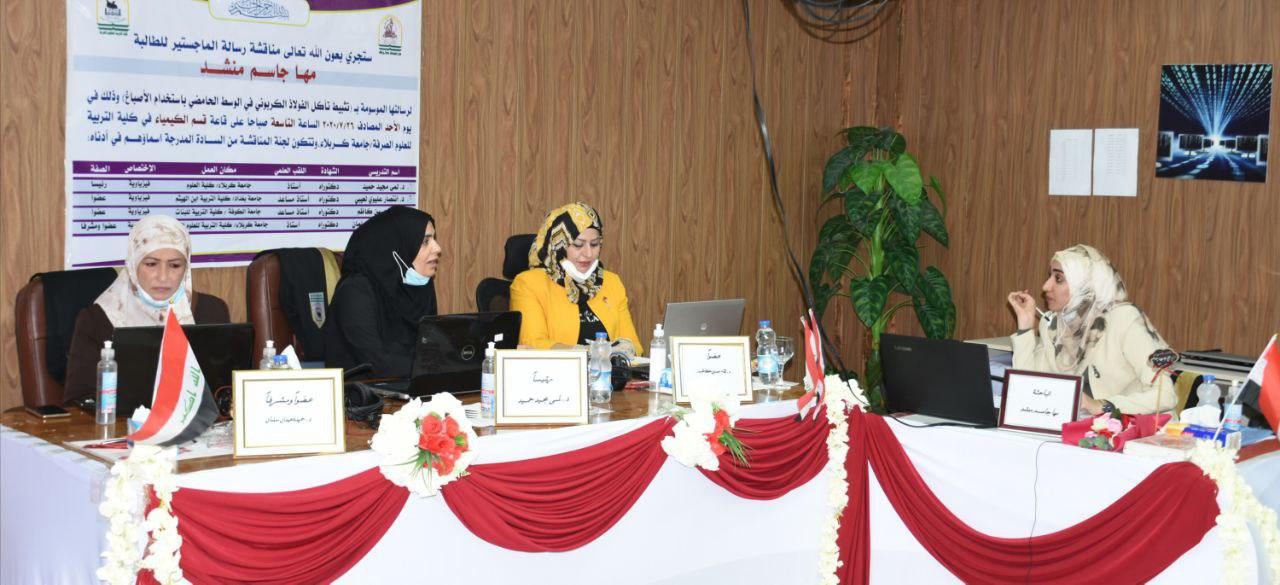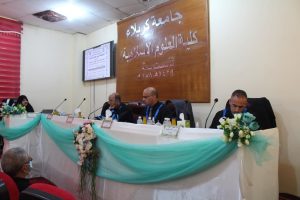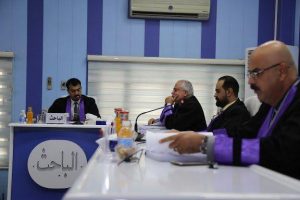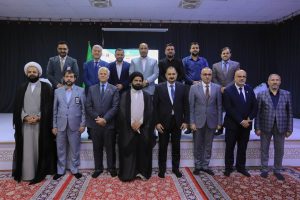The Faculty of Education for Pure Sciences at the University of Kerbala has discussed an M.A. thesis entitled “inhibiting the corrosion of carbon steel in the acidic medium using dyes”, and some committee members have been contacted through the ZOOM program.
The thesis presented by the student Maha Jassim Munshad Al-Morshedy, aims to expanding the horizons of previous scientific work by studying the polarization curves of the corrosion of carbon steel in an acid solution (1M H2SO4) with a temperature range (323 – 303) K using the static stress device.
The study discusses the effect of using different types of pigments as inhibitors to corrosion of carbon steel, studying their inhibition efficiency, measuring the reliability of the corrosion current density on temperature, finding the activation energy Ea and Arrhenius A factor for the corrosion process through the Arrhenius equation, studying the relationship between the structure of the inhibitor and the efficiency of inhibition by changing an alternative element at a specific position in the damped part.
The study deals with adsorption isotherms and their compliance with the adsorption equations (Lancemire, Fermin, Empowerment) and the calculation of the thymodynamic functions of the adsorption process.
The discussion shows that the corrosion rate of carbon steel in the acidic medium (1M H2SO4) increases with increasing temperature and depends on the concentration and nature of the medium, the inhibition efficiency increases with increasing temperature and with increasing concentration, and the results also indicated that the activation energy in the corrosion medium is of relatively high value. It is greater than that obtained by using the inhibitor, and therefore the use of the three dyes and within the range of concentrations used led to a decrease in the energy barrier of the corrosion process and the reason is due to the electric field generated at the environmental surface of the inhibitor solution.
The discussion recommends that the current work focus on the use of one type of carbon steel. It is possible to use other alloys of different metals under the same experimental conditions used, and that the use of other dyes containing different active groups than those studied as corrosion inhibitors, and the possibility of using organic inhibitors or not another organic study that may show better inhibition efficiency than those used dyes, and emphasized the study of corrosion behavior in a fixed system and with the presence of dissolved oxygen, the same study could be conducted, but in the absence of oxygen and a comparison of the effect of the presence and absence of oxygen on the corrosion behavior.
































































